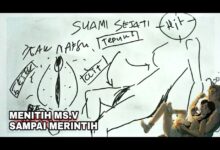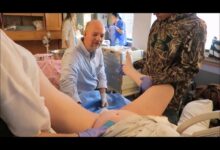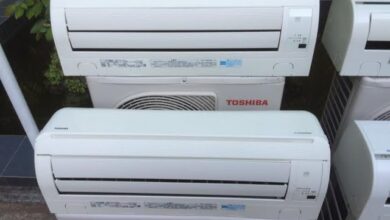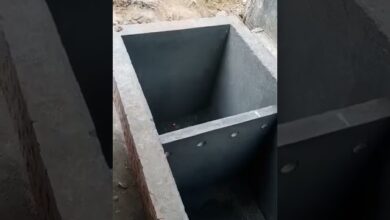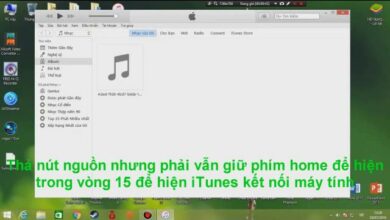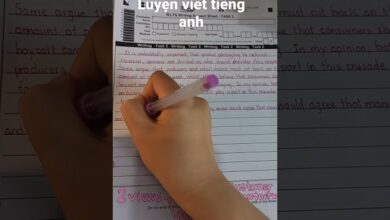Phu Quoc Prison – Shivering before the hell on earth kiến thức mới năm 2023

Mục lục bài viết
Phu Quoc Prison – Shivering before the hell on earth – Cập nhật kiến thức mới nhất năm 2023
Phu Quoc prison (Phu Quoc prison) is a historical proof of the resilient and enduring struggles of the Vietnamese nation as well as the crimes of the colonial empire. Up to now, when the war has passed, this place is still the haunt of revolutionary soldiers and many tourists.
1. Where is Phu Quoc Prison?
2. History of Phu Quoc prison relic site
2.1. Prison on Phu Quoc Island during the French colonial period
2.2. Coconut Tree Prison in the American – Wei period
3. The remaining items at the prison in Phu Quoc
3.1. Gate of Battalion 8 military police at Phu Quoc prison
3.2. Prisoner’s Graveyard inside the Prison Historical Site
3.3. Kien Van Church at the prison in Phu Quoc
3.4. Relics additional exhibition house
3.5. Division B2 in Phu Quoc Island Prison
3.6. Martyrs Memorial at Sim . Hill
3.7. Gate of 7th Military Police Battalion
3.8. Gate and house of the Prison Command at the prison in Phu Quoc
4. Historical significance of Phu Quoc prison
5. Experiences in Phu Quoc prison ruins
5.1. See firsthand the re-enactment of the torture scene in B2
5.2. Visiting solitary confinement room, torture at prison in Phu Quoc
5.3. Types of torture of the US imperialists in Phu Quoc prison
6. A few notes when going to prison on Phu Quoc island
https://youtu.be/uvBuPFVYMx0
1. Where is Phu Quoc Prison?
Phu Quoc prison is a prison located at 350, Nguyen Van Cu street, An Thoi commune, 28km from the center of Duong Dong town, Phu Quoc.
Phu Quoc Prisoner of War Prison, or Phu Quoc Communist Prisoner of War Prison, is a prison located in An Thoi ward in the south of Phu Quoc island. During the Indochina War, this prison was called Coconut Tree Jail. This is the central prisoner prison of the Republic of Vietnam, having held more than 32,000 prisoners (40,000 prisoners if including political prisoners of many periods).
During the Vietnam War, prisoners of war at Phu Quoc POW Prison were subjected to punishments and tortures such as nailing to hands, feet, and heads; Burning red-hot zinc wire piercing flesh, chiseling teeth, covering a sack with boiling water or pouring coal fire, throwing it into a pan of boiling water, burning it alive, burying it alive… Within a period of less than 6 years (from May 6/1967 to 3/1973) Phu Quoc prisoner of war camp, more than 4,000 people died, tens of thousands of people were injured and disabled.
Phu Quoc Prisoner of War Prison has a total of 12 zones (1972) numbered from zone 1 to zone 12. Particularly, zones 13 and 14 were built more at the end of 1972. Each prison area has the capacity to house about 3000 prisoners. In 1972, there were about 36,000 prisoners. Each prison is divided into several subdivisions. Usually there are 4 subdivisions, in 1 zone. One division holds 950 prisoners. Separate subdivision B2 is dedicated to the detention of officers. The prisoner with the highest rank was Colonel. Phu Quoc Prisoner of War Prison is guarded by 3 military police battalions (7, 8, 12).
In addition, Phu Quoc Prison also has a criminal prison, which holds common prisoners sentenced to 10 years or more, in Duong Dong ward, the west side of the island.
Currently, Phu Quoc Prison is one of the historical tourist attractions, where the crimes of the United States and the Republic of Vietnam are recorded.

Perhaps when coming here, tourists are curious about wartime stories, barbaric crimes that people often mention about the French colonial period, America – Wei. The faithfully reproduced stories will be the clearest evidence for the cruelty and fierceness of war.
2. History of Phu Quoc prison relic site
2.1. Prison on Phu Quoc Island during the French colonial period
The largest prison in Southeast Asia
If anyone wonders what year Phu Quoc prison was built, it was the time in 1946, when the French colonialists occupied Phu Quoc to build the largest prison in Southeast Asia. The prison at that time had an area of about 40 hectares and was divided into 4 zones A, B, C, D.
This place is guarded extremely strictly, surrounded by barbed wire fence, above with protective lights. The watchtowers and patrols are fully armed.
By April 1954, the prison had about fourteen thousand inmates, mostly men. Under the brutal torture of the French colonialists, 99 communist soldiers died.
Geneva Agreement
After the Geneva Agreement in July 1954, France returned the prison management right to Vietnam. It seemed that the war stories had ended, but no, the Coconut Tree prison entered a new, more brutal and terrifying nightmare.


2.2. Coconut Tree Jail in the American – Wei period
After handing over management rights to the Vietnamese government, at the end of 1955, a new prison was built in the old Cay Dua prison with an area of about 4 hectares. At this time, the prison was called Cay Dua Prison, divided into male, female, and elderly quarters.
Brutal forms of torture such as barbed-wire tiger cages, nailing to the forehead, knees or high-voltage electricity on the body… are used on our soldiers.
During this period, Phu Quoc prison had thousands of deaths, tens of thousands of people were injured and disabled beyond treatment.

3. The remaining items at the prison in Phu Quoc
3.1. Gate of Battalion 8 military police at Phu Quoc prison
The gate of Battalion 8 military police is made of iron pillar core and solid brick, forming 2 square pillars on both sides. The monument has been restored to look exactly like the original.
3.2. Prisoner’s Graveyard inside the Prison Historical Site
The prisoner’s cemetery with an area of about 20,000m2 is about 1km from the prison point – subdivision B2. The cemetery is designed in a circular shape, above it is a fist-shaped monument showing the indomitable, heroic and resilient spirit of our nation.

3.3. Kien Van Church at the prison in Phu Quoc
Kien Van Church is currently a ruin with only cement columns remaining, with an area of more than 4000m2.
3.4. Relics additional exhibition house
The gallery is divided into 2 rooms. Including, room 1 contains artifacts and history of the prison’s formation and existence. Room 2 has 100 photographs documenting the enemy’s torture methods as well as the ways our people struggled during the war.

3.5. Division B2 in Phu Quoc Island Prison
Subdivision B2 is currently being restored with an area of more than 17,000m2, including items such as: guard guard (watchhouse), fence, prison gate of subdivision B2, barbed-wire tiger cage, kitchen, canteen , detention and torture areas for prisoners…

3.6. Martyrs’ Monument at Sim Hill
The memorial is designed with two sides of a wave shape of 5m high with the center being a pointed block hollowed out about 2m inside, meaning “people coming out of that place”.

3.7. Gate of 7th Military Police Battalion
The gate of Battalion 7 is about 4.1m high and 0.85m wide, the two gate posts are 5.9m apart. Adjacent to the gate post, from the left side is a summary table of the 7th Military Police Battalion.
3.8. Gate and house of the Prison Command at the prison in Phu Quoc
Currently, the gate and house of the prison command board are restored with reinforced concrete, corrugated iron roof, wooden windows. The main gate door is made of strategic iron bars and barbed wire.
4. Historical significance of Phu Quoc prison
If the places to visit and play in Phu Quoc show us the prosperity and attraction of this island, the Phu Quoc prison shows a sad silence. This place has saved the heinous crimes of the American empire and the French colonialists. They did not hesitate to use brutal methods to torture and lose the fighting will of the soldiers.
Every nook and cranny of the prison, every story of a soldier, has shown the resilient, indomitable and heroic fighting spirit of our nation. Visiting Phu Quoc prison, we can see the fierceness of the war as well as better understand the history of the nation.
5. Experiences at the Phu Quoc prison ruins
5.1. See firsthand the re-enactment of the torture scene in B2
This is a place that has been restored and faithfully recreated the brutal torture scenes of the prison. Telling wartime stories with effigies of prisoners and soldiers will make visitors feel most clearly about the cruel reality of the time of the struggle for independence of our army and people in the past.

5.2. Visiting solitary confinement room, torture at prison in Phu Quoc
The solitary confinement room of the prison in Phu Quoc is the most haunting place for many revolutionary soldiers. Because it was here, the colonial empire used cruel forms of torture on the soldiers of our people.

5.3. Types of torture of the US imperialists in Phu Quoc prison
Some of the tortures in Phu Quoc prison that former prisoners have recounted are as follows:
- “Needling”: using old needles, slowly insert 10 fingers.
- “Tiger barbed wire cage”: a type of tiger cage made entirely of barbed wire, woven around and on the roof. This tiger cage is located outdoors in the subdivision. Each subdivision has up to two or three cages for tigers – the one that holds one person and the one that holds 3-5 people. The size of the tiger cage is very diverse, some for prisoners lying on sandy soil, some forcing prisoners to lie on barbed wire, some lying down or standing; there are just sitting stooped; the kind that have to stand stooped, can’t stand up straight but sit down, will have to sit on barbed wire. Prisoners must take off their shirts and long pants, and only wear shorts to dry in the sun, dew and rain all day and night.

- “Eat light rice”: prisoners are not allowed to eat salt, after two months their eyes will be blurred, after 5-6 months someone will be completely blind.
- “Folding iron”: iron sheets with round holes and full of knots to hang together and turn upside down to make “airport runways” and then force prisoners to take off their shirts and pants, leaving only shorts. The prisoner was forced to put his head in the iron grate upside down, after a few times the prisoner’s back was covered in blood, his hair was torn off, and his skin was torn.
- “Knock the barrel”: take the barrel face down on the squatting prisoner, then knock on the barrel. Prisoners will have headaches, will be deaf because of the strong knocking and air pressure. Also by tapping the drum filled with water, inside the barrel is the prisoner. This type of torture can cause the prisoner to vomit blood because of the pressure of the water.
- “Chilling teeth” and “breaking teeth”: put chisels close to the roots of prisoners’ teeth, use hammers to break teeth.
- “Stray whip”: the warden uses long stingray rods, which are dried to beat the prisoners. Before being beaten, the prisoner had to take off his shirt so that he could be beaten on his bare skin. Stingray’s whip often wraps around the victim’s body, then pulls it out, causing the flesh to be severed. The superintendent can then rub salt and pepper on the victim’s skin. In early 1970, when the International Red Cross delegation visited Phu Quoc prison, they encountered a stingray stick with dried blood.
- “Crucifixion”: 3-inch nails were used to drive prisoners’ fingers during torture. Each time the prisoner was crucified, the bones of the prisoner’s fingers were broken. There are also nails of 7, 8 inches or an inch to hammer into the prisoner’s body in the following areas: ankles, shoulder joints, ankles, shins, and heads. Some people were crucified to death, later when the grave was unearthed, there were still nails in the remains.
- Cover the prisoner with a sack and throw it into a pan of boiling water. Three prisoners in the C6 division were boiled to death.
- Use a high-powered light bulb to stay close to the prisoner’s face for a long time to explode the pupil.
- Use fire to burn your mouth and genitals.
The Red Cross visited Phu Quoc prison in 1969 and 1972. Its observers saw systematic and prolonged brutality at the prison. They found evidence of torture in prisoners, including scars caused by electric torture, showing lack of food and malnutrition. In August 1971, an investigator from the US Embassy in the Republic of Vietnam reported that the beating of prisoners in Phu Quoc continued. In the Army of the Republic of Vietnam, the guard at the prison was assessed only by the number of prisoners who escaped from the camp, making no effort to discipline the guards who mistreated the prisoners. After the investigation results of the MACV and the US Embassy, General Cao Van Vien, commander-in-chief of the Army of the Republic of Vietnam, still affirmed that the inspection teams of the International Red Cross organization had falsely reported on the information. prison status.
There are many other brutal torture methods that Cay Dua prison has restored in a very authentic way.

6. A few notes when going to Phu Quoc island prison
Phu Quoc Island Prison is a special attraction, so every visitor who comes here should also pay attention to avoid damaging the artifacts here:Nên mặc những trang phục lịch sự.
- Do not touch or touch the exhibits on display.
- Need to bring food and water because the prison is built on a fairly large scale. While sightseeing, it is difficult to find food and drink.
- Do not throw garbage indiscriminately to avoid affecting the hygiene of the relic site.
- The prison is open from 8:30 a.m. to 11:30 a.m., from 1:30 p.m. to 5:00 p.m.
- Admission is completely FREE.
In 1995, Phu Quoc Prison Historic Site was recognized as a national relic by the Ministry of Culture and Information. Historical sites of Phu Quoc Prison include a statue of a fist, a “symbol of fierce repression and the brave spirit of Phu Quoc prisoners of war”, the martyrs cemetery, and the Camp area. Phu Quoc Prisoner’s Prison was restored.

Phu Quoc Prison is a place that will give visitors a lot of historical knowledge, as well as many fascinating experiences. Do not forget, Phu Quoc has many interesting destinations waiting for you to explore. What are you waiting for, don’t pack your bags and go now!
See more
The origin and meaning of the Mid-Autumn Festival
Ho Quoc Pagoda Phu Quoc – Famous spiritual monastery in pearl island
Hon Thom Cable Car – The longest 3-wire cable car in the world
Sen Tay Ho – The largest buffet restaurant in Vietnam
The most detailed experience of going to Vinpearl Safari Phu Quoc
The Best Team Building Backdrop Template
Summary of Tet wishes – Happy New Year 2022 Best
Top 50 Most Beautiful Women in the World 2022
Kết thúc
Ngoài các bài viết tin tức, bài báo hàng ngày của https://www.kythuatcodienlanh.com/, nguồn nội dung cũng bao gồm các bài viết từ các cộng tác viên chuyên gia đầu ngành về chuỗi kiến thức kỹ thuật điện, điện lạnh, điện tử, cơ khí,…,.. được chia sẽ chủ yếu từ nhiều khía cạnh liên quan chuỗi kiến thức này.
Bạn có thể dành thời gian để xem thêm các chuyên mục nội dung chính với các bài viết tư vấn, chia sẻ mới nhất, các tin tức gần đây từ chuyên gia và đối tác của Chúng tôi. Cuối cùng, với các kiến thức chia sẻ của bài viết, hy vọng góp phần nào kiến thức hỗ trợ cho độc giả tốt hơn trong hoạt động nghề nghiệp cá nhân!
* Ý kiến được trình bày trong bài viết này là của tác giả khách mời và không nhất thiết phải là SEMTEK. Nhân viên tác giả, cộng tác viên biên tập sẽ được liệt kê bên cuối bài viết.
Trân trọng,
Các chuyên mục nội dung liên quan
